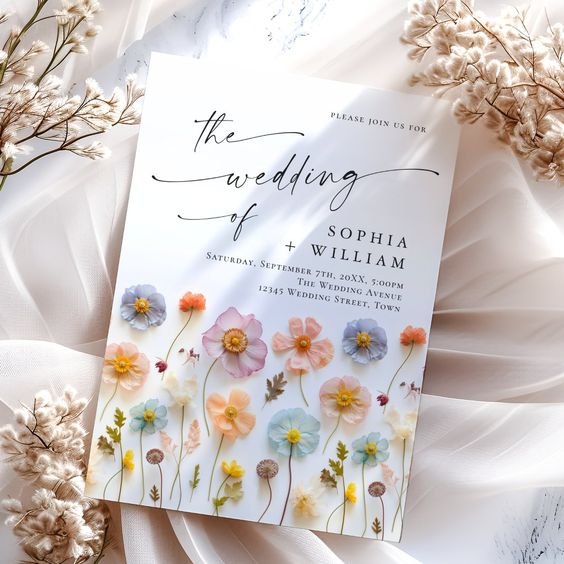What to Include in Your Wedding Invitations: A Complete Guide
Your wedding invitations are more than just a piece of paper—they're the first glimpse your guests will have of your big day. Whether you're planning a grand celebration or an intimate gathering, your invitations set the tone and provide essential information. Here's everything you need to include to ensure your guests are well-informed and excited about your wedding.
1. The Basics: Who, What, Where, and When
At the heart of every wedding invitation are the fundamental details:
Names of the Couple: Traditionally, the bride's name is listed first, but modern couples often choose the order based on personal preference. If the wedding is hosted by the parents, their names might appear at the top.
Date and Time: Be clear about the date, including the day of the week and the time of the ceremony. If your ceremony is followed by a reception, note this as well.
Venue Name and Address: Include the full name and address of the ceremony and reception venues. If the locations are tricky to find, consider adding a map or directions.
2. The Host Line: Who's Hosting the Wedding?
Traditionally, the bride's parents were the hosts, but today’s weddings might be hosted by both sets of parents, the couple themselves, or a combination. Your invitation should reflect this. For example:
"Together with their families"
"Hosted by the parents of [Bride's Name] and [Groom's Name]"
"With joy, [Bride's Name] and [Groom's Name] invite you..."
3. Dress Code: What Should Guests Wear?
Let your guests know the dress code so they can plan their attire accordingly. Whether it's "Black Tie," "Cocktail Attire," "Semi-Formal," or "Casual," including this information helps avoid any confusion and ensures everyone is dressed appropriately for the occasion.
4. RSVP Details: How and When to Respond
An RSVP (Répondez s'il vous plaît) is crucial for planning your wedding. Include:
RSVP Deadline: Typically, guests should RSVP at least 6-8 weeks before the wedding date. This gives you enough time to finalise numbers for catering and seating.
How to RSVP: Provide clear instructions on how guests should RSVP. Whether it’s a reply card with a pre-stamped envelope, an email address, or a wedding website link, make it as easy as possible.
Special Requests: If applicable, ask guests to note any dietary restrictions or song requests for the reception.
5. Additional Information: What Else Do Guests Need to Know?
Depending on your wedding, you may need to include extra details:
Accommodation Information: If you have guests traveling from out of town, include a list of recommended hotels and any group rates you've secured. You might also include information about transportation options to and from the venue.
Wedding Website: If you have a wedding website, include the URL on the invitation. Your website can provide additional details like the wedding schedule, a photo gallery, the story of how you met, and a gift registry.
Gift Registry: It's generally considered a faux pas to include registry details directly on the invitation. Instead, list it on your wedding website or a separate enclosure.
Reception Details: If your ceremony and reception are at different locations, include information about the reception venue and timing. You might also include a note if there's a gap between the ceremony and reception.
Childcare Information: If your wedding is child-free, mention this on the invitation in a polite way. If you're providing childcare at the venue, include those details.
6. Design Elements: Making It Personal
Finally, don’t forget that your wedding invitations should reflect your style and the theme of your wedding. Whether you opt for classic elegance, rustic charm, or modern minimalism, your invitations should be a preview of what’s to come.
Colors and Fonts: Choose colors and fonts that match your wedding theme. Elegant script fonts are popular for formal weddings, while simpler fonts might suit a more relaxed celebration.
Monogram or Wedding Logo: If you’ve created a monogram or logo for your wedding, incorporate it into your invitation design.
Paper Quality and Printing: The quality of paper and printing can make a big difference. Consider options like letterpress, foil stamping, or embossing for a luxurious touch.
Conclusion
Crafting the perfect wedding invitation takes time, but by including all the necessary information, you'll ensure your guests have everything they need to celebrate your special day. Remember, your invitation is the first impression of your wedding, so make it count!
Image Sources: Pinterest









